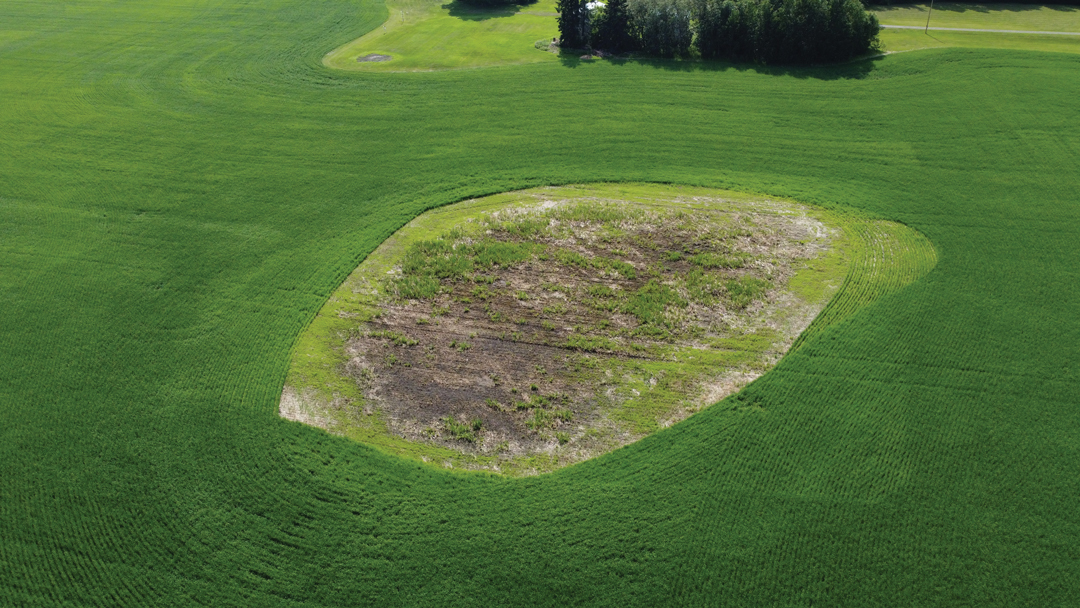STRESS RELIEVERS
BY ELLEN COTTEE • PHOTO BY JEREMY BOYCHYN
Irrigation aside, there is typically no remedy for drought, but a number of abiotic stress management products now or soon to be on the market may give crops a fighting chance against dry conditions. Certain of these crop inputs purport to help plants tolerate heat, drought, chill and salinity.
Following five years of development and a further two years of positive field data, Corteva Agriscience will soon release its own stress reliever. In June of 2021, the company announced the forthcoming commercial release of a new abiotic stress management tool under the names Sosdia Stress and Sosdia Stress Plus. The osmo-protectant spray is intended to reduce water vapour loss, accelerate recovery and promote continued growth following stress, according to Frederic Beudot, the company’s business director of crop protection.
“Sosdia helps the plant minimize the effects of osmotic stress by stabilizing proteins,” said Beudot. Osmotic stress is most commonly seen in crops that are subjected to drought and high soil salinity. The term broadly refers to a decline in a cell’s water potential, leading to changes at the plant’s molecular and cellular levels that occur as it enters survival mode. In high-stress situations such as drought, this self-protective reaction reduces water retention and slows photosynthesis. As a result, the plant’s growth and yield decrease.
The product’s recipe of small organic molecules was developed for Corteva by life sciences company Elemental Enzymes of St. Louis, Miss. These components are intended to delay the plant’s survival mode response, increase water retention and stabilize proteins, which allows growth to continue. “Sosdia products allow the crops to focus on growth and yield generation, not on utilizing energy to recreate damaged membranes and proteins,” said Beudot.
According to Beudot, the product is also easy to use. He said it should be applied prior to the appearance of visible stress symptoms. For row crops, this means application should be carried out during the growing season with a focus on a single application ahead of “the greatest risk period.”
Of course, no product can guarantee a crop can be made to thrive in a particularly tough growing season. “In general, farmers are always looking for an opportunity to do better,” said Jeremy Boychyn, agronomy research extension specialist with the Alberta Wheat Commission and Alberta Barley. “Most farmers also know that when it comes to growing crops in a stressful situation, there isn’t a silver bullet to resolve issues.”
Now available for sale in the U.S., the Sosdia line will likewise be available to Canadian farmers in the near future upon the completion of global regulatory reviews, trials and on-farm demonstrations to be conducted throughout 2022. When the product does hit Prairie farm retailers, it will be crucial for farmers to review its effectiveness for their operations, said Boychyn. “It’s important to understand the complexity of agriculture. Each farmer grows crops in different regions, rainfalls, soil types, genetics—the list is endless,” he said. “Farmers need to make sure they’re trialling these products on their own farm to understand their value.”







Comments